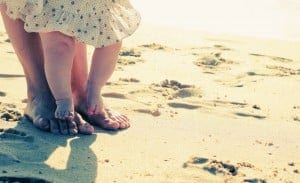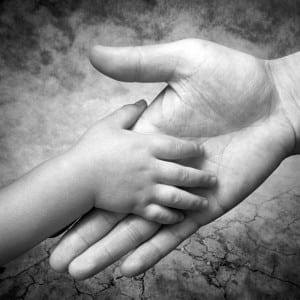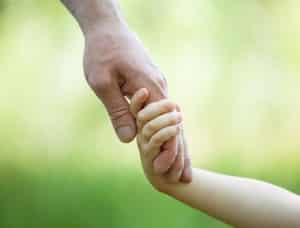Trust: when it comes right down to it, it’s the basis of all relationships. And sometimes we learn this the hard way. Which is bad enough, but it’s even worse to watch from a distance as our children learn the meaning of trust abused, and how easily it can happen.
You warn your child: don’t take that precious toy you got as a gift to school. But she doesn’t listen. She comes home from school, in tears, crestfallen.
You already know what happened. Your child’s obvious caring for that toy made her a target. A “friend” begs to hold the toy for a minute. “I just want to see it, hold it,” says the “friend” who then dashes it to the floor, smashing the toy to bits. She laughs in triumph, taunting your child.
The Loss of Trust
You hate that your child had to go through that. You hate having to explain meanness and cruelty to your child. But once brought to light, you can’t put the genie back into the bottle, now can you (even though your child thinks you can do ANYTHING, leap tall buildings in a single bound, for instance, and here she will learn otherwise, as well)?

Or it could be a different scenario in which the abuse of your child’s trust may not be as malicious as all that. Her friend pleads to borrow her Supersonic Dashing Mad Madeleine doll, promising to take excellent care of the beloved dolly. You know what happens next.
The “friend” loses the doll, or damages or breaks it, and makes no effort to replace the item. Her apology isn’t all that heartfelt. She doesn’t much care.
“How could this happen??” moans your child. “Doesn’t she know how much I love that doll?”
Actually, no. She doesn’t know. She’s not mean or malicious, just not thinking about the repercussions of her behavior.
This too, is a lesson for your child. Don’t lend the things you love to people unless you know for a fact your item will be returned in the same condition. It’s not something you can trust. You have to watch for signs. You have to watch your friends’ behavior, really get to know them before you can trust them with your things.
And sometimes you have only your instinct to go on. And sometimes your instincts will be wrong.
And at this point, there is yet another lesson for your child to learn: forgiveness.

She has to forgive the little girl who broke her toy—let’s call her “Belinda”—because Belinda isn’t really capable of taking care of important possessions. It’s not in her skill sets, to date. How can you be mad at Belinda for breaking a doll when she doesn’t even take care of her own things?
“But how could I know that about Belinda?” asks your daughter—let’s call her Claudia—when you tell her she has to forgive and forget.
Here’s where you (at last!) have a teachable moment. “Think of the way Belinda dresses,” you might say. “Does her hair stay neatly tied all day? Are her shoes tied properly? What does she do when she drops a piece of apple on the floor during snack? Does she have to be told to pick it up and throw it away?”
Now sit back and watch the wheels turn in Claudia’s head.
All very well for young children, you might be thinking, but what about teenagers? With all their drama, you can tell they’re still learning about trust issues and relationships, too. How do you help them past the hurts? How do you help them learn the lessons?
The truth is it’s not much different. You ask the relevant questions and then sit back and watch the wheels turn—watch your child work it out in his head.
Let’s say your son Bob works very hard on a school project with another boy named Jim. Bob does most of the work, while Jim is somehow never around to help out. The project is handed in, gets a great grade, and Jim takes most of the credit.
Bob has a right to be infuriated. Worse yet, there’s no way for him to tell the teacher the truth without making Jim look bad, which would make Bob a stinker for telling on him.

So Bob comes home and tells you the entire sad story. How do you help him?
First of all, you listen, and show him you care. Let him see you feel his hurt and let him know you’re on his side. Don’t criticize him unless you want him never to tell you about anything ever again.
Seriously, don’t do that. Don’t criticize him. Not now.
But that doesn’t mean you can’t help him work out what really happened, his part in the whole sad story, his mistakes, and what he might have done to protect himself.
You do it with questions. Just like you did in the above example with Claudia and Belinda and the broken/lost/damaged dolly. You ask the sort of questions you hope your child will ask himself the next time around, BEFOREHAND, when judging whether or not to trust a person with his friendship.
And then you let your child draw his own conclusions. In the case of Bob, here are some questions you might ask:
- Were there signs this could happen?
- Is Jim generally a hard worker?
- Have you seen other cases in which Jim took the credit for something someone else did?
- Why do you think Jim acted as he did?
- Is there something you can do to prevent this from happening in the future?
- What did you learn from this experience?
The questions you ask your child may seem self-evident to you, but they are not at all evident to him. In posing these questions, you are teaching

your child about the qualities that define friendship, the qualities that deserve our trust and respect. You’re teaching him what friendship means.
By extension, you’re showing your child how to be a good friend. You’re teaching him to be the kind of person who inspires trust in others: a person with integrity who cares about others.
It’s arguably the most important lesson of all.
